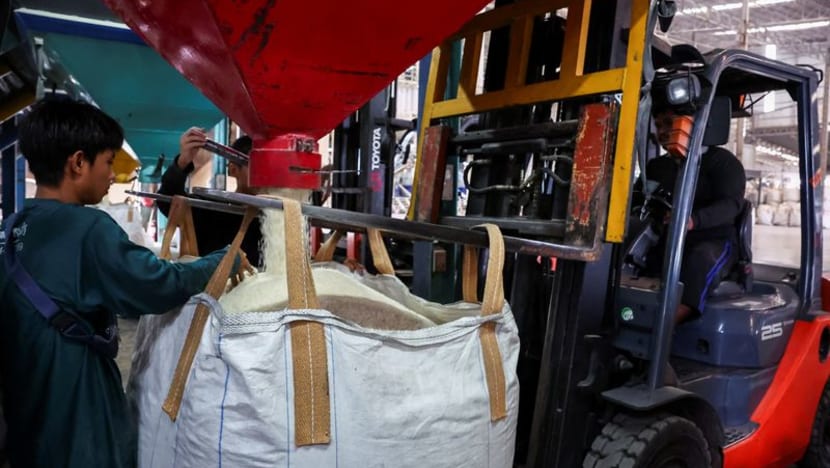Business
Southeast Asian Exporters Face Dilemma Over Trump Tariffs

US President Donald Trump’s tariffs, referred to as “Liberation Day” tariffs, have significantly impacted Southeast Asian exporters. While these tariffs have decreased somewhat, they remain substantial. Exporters must decide whether to absorb these tariffs by reducing profit margins or to pass the costs onto importers through higher prices, which could risk their market share.
The likelihood is that many Southeast Asian exporters will choose to pass through the tariffs, similar to their competitors. This decision may lead to more detrimental effects on the US economy than on Southeast Asia. Trump’s assertion that the burden of tariffs falls on foreign sellers rather than domestic buyers is fundamentally flawed. The final impact largely depends on how exporters and their competitors react to these tariffs.
Research on the pass-through of policy changes, including tariffs, suggests that this process can vary based on market conditions. Tariffs may be fully absorbed by exporters, by importers, or even at the retail level, which adds another layer of cost absorption. In a post on Truth Social dated May 17, 2025, Trump stated, “Between Walmart and China, they should, as is said, ‘EAT THE TARIFFS’, and not charge valued customers ANYTHING.”
Absorption vs. Pass-Through
If exporters choose to absorb the tariffs, it could result in a welfare-improving terms of trade (TOT) gain for the importing country. This means that the US could purchase more imports with its exports, as the former would become less expensive. Conversely, if the tariffs are not fully absorbed, the overall benefit would depend on how much the TOT gain offsets the economic distortions caused by the tariffs.
Previously, during Trump’s first term, tariffs were imposed on China with reports indicating that Chinese exporters absorbed between 10% to 50% of the tariff on specific products like steel. However, for most goods, there was little to no change in pricing from the exporters. The Trump administration often cited this partial absorption to justify its tariffs. Currently, there is less incentive for exporters to absorb the tariffs, as the competitive landscape is much broader. This round of tariffs affects all countries, not just China as in the past.
If the differences in tariff rates between countries are not significant enough to threaten market shares, Southeast Asian exporters are likely to follow suit and pass through the tariffs.
Rising Prices and Economic Impact
Evidence of price increases related to these tariffs is already emerging. For example, the US producer price index rose by 0.9% in July 2025, marking the highest increase in over three years. With the suspension of tariffs set to end in August 2025—except for those on China—further price hikes are anticipated. These initial price effects are just the beginning.
In the second round of effects, increasing costs of imported inputs will feed through manufacturing supply chains, amplifying the inflationary impact of tariffs. Higher inflation will likely lead to demands for increased nominal wages to maintain purchasing power, creating a wage-price spiral. Should inflation expectations rise significantly, the economy could enter a cycle that risks runaway inflation. This may necessitate monetary tightening, potentially dampening economic growth.
As trade partners adjust to these tariffs, there are indications that Southeast Asia is diversifying its markets. Although the US market is crucial to Southeast Asia, these adjustment costs are likely to diminish over time. As competition to supply the US market lessens, the motivation for exporters to absorb tariffs will decline.
Ultimately, the outcome may lead to higher prices and reduced choices for US consumers. Trump’s belief that exporters will lower prices to maintain competitiveness in the US market does not align with historical and current evidence. Instead, it seems that tariffs are typically passed through to consumers in the long run.
The trends observed with the recent tariffs suggest that Southeast Asian exporters may not need to reduce their profit margins if most other countries are also passing through the tariffs. Southeast Asia’s manufacturing supply chains are intricately linked to China, making it unlikely for significant shifts in production due to these tariffs. While exporters might maintain profitability, they may face declines in export volumes if US economic growth falters.
In summary, while there may be varied impacts on Southeast Asian exporters, the overall consequences of these tariffs will likely result in negative outcomes for both the US and the global economy. The insights provided by Jayant Menon, a Visiting Senior Fellow at the ISEAS – Yusof Ishak Institute, emphasize the complexity and potential repercussions of these trade policies.
-

 Business5 months ago
Business5 months agoKenvue Dismisses CEO Thibaut Mongon as Strategic Review Advances
-

 Lifestyle4 months ago
Lifestyle4 months agoHumanism Camp Engages 250 Youths in Summer Fest 2025
-

 Sports4 months ago
Sports4 months agoDe Minaur Triumphs at Washington Open After Thrilling Comeback
-

 Sports5 months ago
Sports5 months agoTupou and Daugunu Join First Nations Squad for Lions Clash
-

 Top Stories5 months ago
Top Stories5 months agoColombian Senator Miguel Uribe Shows Signs of Recovery After Attack
-

 World5 months ago
World5 months agoASEAN Gears Up for Historic Joint Meeting of Foreign and Economic Ministers
-

 Health4 months ago
Health4 months agoNew Study Challenges Assumptions About Aging and Inflammation
-

 Business5 months ago
Business5 months agoOil Prices Surge Following New EU Sanctions on Russia
-

 Entertainment4 months ago
Entertainment4 months agoDetaşe-Sabah Violin Ensemble Captivates at Gabala Music Festival
-

 Entertainment4 months ago
Entertainment4 months agoBaku Metro Extends Hours for Justin Timberlake Concert
-

 Top Stories5 months ago
Top Stories5 months agoRethinking Singapore’s F&B Regulations Amid Business Closures
-

 Business5 months ago
Business5 months agoU.S. House Approves Stablecoin Bill, Sends to Trump for Signature









